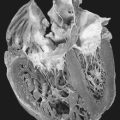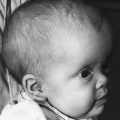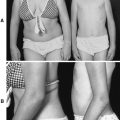69. Polyarteritis Nodosa
Definition
Polyarteritis nodosa (PAN) is a rare form of systemic necrotizing vasculitis that primarily affects small and medium-sized arteries without glomerulonephritis or vasculitis in the arterioles, capillaries, or venules.
Incidence
In the United States the incidence of PAN is 3:100,000 to 4.5:100,000 per year. Internationally the incidence is 1.8:100,000 to 6.3:100,000 per year, except in populations with endemic hepatitis B, where the incidence of PAN can reach 7.7:100,000. There is no observed racial predilection, and males are more frequently affected by a ratio of 1.6:1. The onset usually occurs between 40 and 60 years of age.
Etiology
An immune response is the suspected cause of PAN. About 30% of patients with PAN test positive for the hepatitis B surface antigen. The hepatitis B antigen aggregates with circulating hepatitis B antibodies in the serum and produces vascular lesions.
Signs and Symptoms
• Abdominal pain
• Arthralgia
• Arthritis
• Bleeding
• Bowel infarction
• Bowel perforation
• Cholecystitis
• Congestive heart failure
• Cutaneous infarcts
• Cutaneous neuropathy
• Distal polyneuropathy
• Encephalopathy
• Fever
• Headache
• Hepatic infarction
• Hypertension
• Livedo reticularis (a vascular response to various disorders caused by dilation of the subpapillary venous plexus as a result of increased blood viscosity which changes the blood vessels delaying blood flow away from the skin)
• Malaise
• Mononeuritis multiplex
• Myalgia
• Myelopathy
• Myocardial infarction
• Nausea
• Nodules
• Pancreatic infarction
• Pericarditis
• Purpura
• Rash
• Raynaud’s phenomenon
• Renal failure
• Seizures, cerebral ischemia
• Testicular or ovarian pain
• Vomiting
• Weakness
• Weight loss
 |
| Polyarteritis Nodosa. Cutaneous polyarteritis nodosa as manifested by a livedo pattern with purpuric and necrotic lesions. |
Medical Management
The standard treatment for the patient with idiopathic PAN, as well as those with more severe manifestations of the disease, is administration of corticosteroids combined with cyclophosphamide. The patient whose PAN is identified with hepatitis B may be treated with a regimen that includes plasmapheresis and/or antiviral medications. Immunomodulation therapy seems to work well, but the therapeutic response is optimized when a corticosteroid, such as prednisone, is combined with cyclophosphamide rather than administered alone. Surgical intervention may be limited to microembolization of a cerebral aneurysm when this is determined to be appropriate.
Complications
• Bowel infarction
• Encephalopathy
• Gastrointestinal bleeding
• Heart failure
• Myelopathy
• Myocardial infarction
• Pericarditis
• Peripheral neuropathy
• Renal failure
• Stroke
Anesthesia Implications
Lesions of PAN frequently occur in the kidneys, lungs, heart, brain, gastrointestinal tract, liver, adrenal glands, testes, ovaries, and peripheral nerves. The vessels of these organs, in particular, are vulnerable to weakening and dilation. Rupture of lesions of these organs can result in significant blood loss.
On presentation to the operating room, the patient with PAN is generally in serious condition. Bowel perforation may be the precipitating event, requiring surgical intervention. Rapid sequence induction of anesthesia is preferred because of the higher potential for aspiration secondary to gastrointestinal manifestations of the disease process. The patient’s blood pressure should be closely monitored and any hypertensive episode treated without delay because of the potential for untoward cerebral sequelae, such as subdural bleeding or aneurysm rupture.
The airway of the patient with PAN may be unexpectedly difficult to secure. Patients with PAN have been documented to have episodes of acute pharyngeal edema encompassing the uvula and other peripharyngeal structures. Instrumentation for intubation should be undertaken with great caution and care, and may be best attempted by a senior or veteran anesthetist. The anesthetist may have only a single opportunity to secure this patient’s airway. The difficult airway cart should be immediately at hand, including the fiberoptic bronchoscope. It may be necessary to enlist a surgeon to surgically secure the patient’s airway.
The anesthetist should strive to maintain normothermia for this patient. The patient with PAN is prone to Raynaud’s phenomenon. The anesthetist should be sure to warm intravenous fluids as well as provide external warming using a forced-air system.







